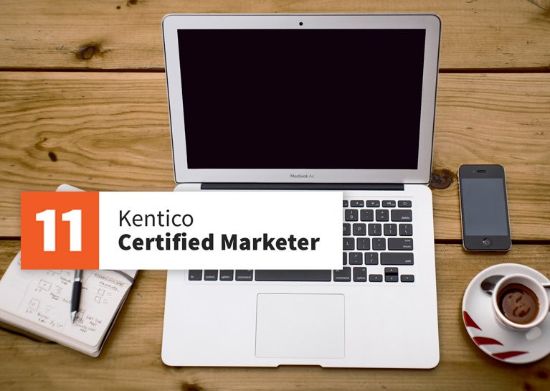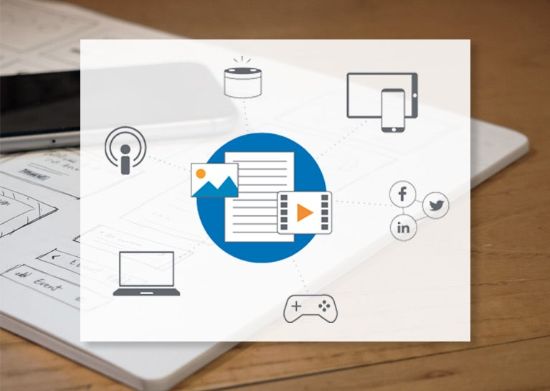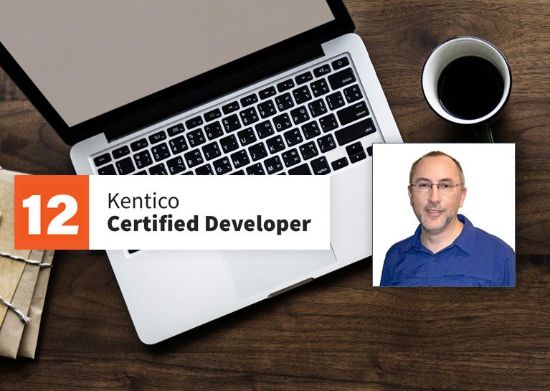
Kentico has always been an excellent solution for many enterprises. One of my earliest experiences with Kentico was to help a Fortune 100 technology company adopt it. Kentico was selected because it provided all-inclusive features, like content management and online marketing, as well as a powerful API that allowed deep customizations for diverse business requirements.
It's no wonder that Kentico is popular with technical companies and developers. However, as a traditional CMS, it can still be met with resistance by organizations that have complex architectures and technical investments already established. Perhaps adoption would be difficult for a customer committed to an incompatible web technology. Or, perhaps adopting Kentico would require rewriting many custom components and integrations to replatform their website.
If pre-existing architecture or the cost of replatforming a complex website is creating obstacles for your Kentico adoption, you might consider using a headless architecture. The type of scenario outlined above led us to recommend a headless architecture to our customer. We were pleased that Kentico EMS really shined with this approach, as a platform for both headless content and headless marketing.
Traditional Challenges
Our customer came to us for help implementing Kentico EMS. They had a legacy CMS using a traditional architecture that was used for rendering marketing pages, while most of the site was served from a custom e-commerce application built on MVC. The custom application used a sophisticated microservices architecture to provide all e-commerce features, including product pages, orders, loyalty benefits, and account management. To ensure the difference between the e-commerce application and the legacy CMS were transparent to the end user, the two web applications behaved as one site. The architecture used complex routing rules at the network level, depending on the URL, to send web requests to the correct application.
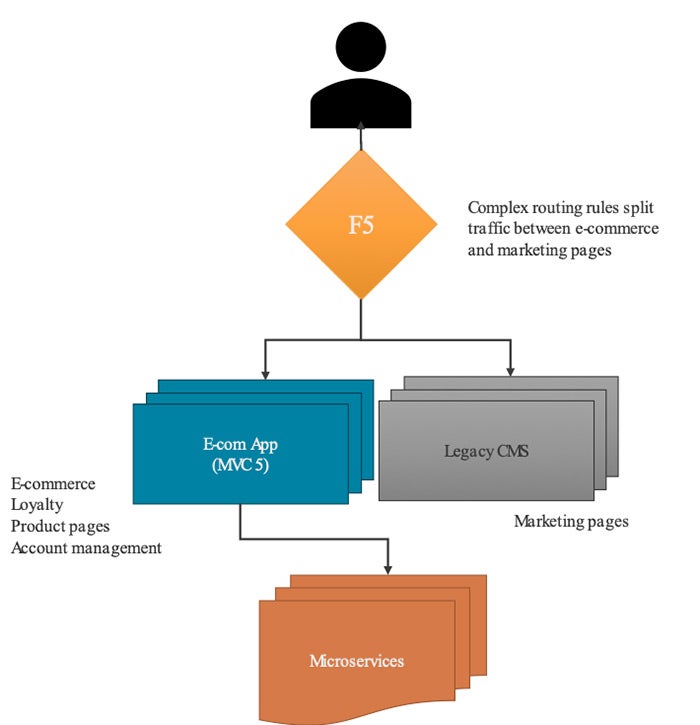
This legacy architecture required significant extra maintenance. For example, besides having to maintain network routing rules, the website’s header, footer, and navigation had to be maintained in two separate platforms, both the modern MVC application, and the legacy CMS application that few people knew how to maintain.
It became immediately apparent that if we were to implement Kentico EMS with a traditional architecture, the customer would be forced to continue maintaining the side-by-side application architecture, with all the network routing rules and redundant application maintenance costs. Alternatively, to retire the side-by-side architecture, the e-commerce application would have to be rebuilt on Kentico, which would require the full e-commerce application to be re-platformed. This solution would have entailed major costs and been considered a step backwards in their decoupled, microservices architecture.
Headless Solution
To solve these challenges, the value of a headless architecture became immediately apparent. We were able to create a headless content service backed by Kentico, that could provide marketing content to the existing e-commerce application. This configuration would allow for the expansion of the MVC app, allowing it to render the marketing pages as well as the e-commerce pages. The solution essentially merged content pages provided by the CMS with the functionality provided by the e-commerce website. Instead of having two applications in a side-by-side architecture, the customer would now have one MVC application backed by a new content service in their microservices ecosystem.
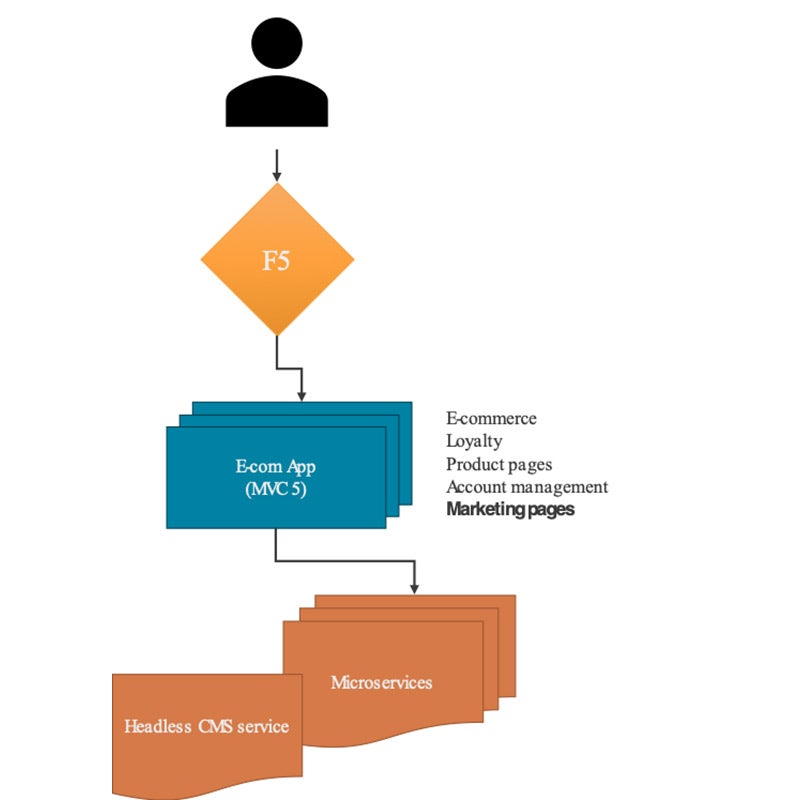
This headless architecture provided numerous benefits that both fit our customer's strategic goals and simplified their architecture. It enabled them to fully leverage their existing talent investments, by allowing most of their developers to continue working with MVC 5 in their existing e-commerce application, rather than having to train their whole team in Kentico. Because they no longer needed to seek and maintain expertise in a legacy CMS, they were able to retire it, remove their network routing rules, and end the need to maintain web components in multiple platforms.
Future Proof
One of the strategic goals of using a headless architecture is to future-proof the technology stack. By decoupling platforms, the customer can use any best-of-breed web presentation layer at any time. The CMS platform no longer dictates the web technologies used. For example, with a headless architecture, an enterprise committed to using ASP.NET Core could easily adopt Kentico EMS today, with no friction. Additionally, the web presentation layer doesn't have to be on the Microsoft stack. It could even be something like Gatsby.js. A headless architecture virtually eliminates platform objections when considering Kentico. The flexibility provided by decoupling platforms gives customers peace of mind, with the assurance that their ecosystem will never be stuck with legacy, hard-to-support platforms.
Learn more about the benefits of headless technology in our HEADLESS CMS FACTSHEET.
Beyond Just Web
A big part of future-proofing is the ability to support emerging content channels. Even though organizations have been managing multiple content channels for a while, such as email, web, print, and even mobile apps, organizations are still struggling with content management. When a marketer needs to publish content, are they likely to know if quality content already exists in another platform? Or, are they constantly rewriting content? Even if they know the content exists, does reusing it require a painful process of extracting, copying, and reformatting? In most organizations, content creation requires a lot of redundant labor, and is done without any insight into what content is resonating with users or what content is most effective.
A goal of a headless CMS is to enable authors to easily and confidently reuse existing high-quality content, because a centralized content service makes it easy for them to know what content exists, analyze which content is effective, and easily pick content that is automatically formatted in whichever channel its used. Great content is no longer locked into a website silo; it is written once, used everywhere, and has measured results.
Compounding this issue is the fact that many new content channels are quickly emerging. The use of voice enabled apps, chatbots, and recommendation engines is growing, and we can only assume that as fast as these new channels have come, newer ones will arrive quickly as well. In short, the content management problem is exploding. The need to centrally manage content and support emerging content channels is a significant strategic reason to adopt a headless architecture.
Read our CONTENT MODELING FACTSHEET to learn more about this future-proofing concept.
Why Kentico EMS?
It was readily apparent that a headless architecture was a great fit for this customer. It satisfied their immediate needs of replacing their legacy CMS and simplifying their side-by-side application architecture. It also achieved their strategic goals of future-proofing their technology stack and supporting emergent content channels.
For some organizations, this would have been a good opportunity for using Kentico’s primary headless product, Kentico Kontent. However, one of the reasons this customer selected Kentico EMS was for its full-featured value, including its online marketing capabilities. The Kentico EMS features were key to enhancing their digital marketing capabilities. Fortunately, implementing Kentico EMS as a headless solution proved to be no problem. As it turns out, Kentico EMS shines in a headless architecture, due to its content-centric approach, with content-only page types, and an emphasis on structured content. Additionally, Kentico provides a robust API that makes the ability to develop a content service endpoint very straightforward.
As I’ve highlighted in some of my previous blog posts, using Kentico EMS marketing features in a headless architecture is very doable, thanks to Kentico’s impressive extensibility (see Logging Contact Activities in a Headless Architecture and How to Identify Unique Visitors in a Headless Architecture).
In Summary
If your organization is considering Kentico, but has a complex existing architecture, in which adopting a traditional CMS seems like a difficult fit, a headless architecture may be right for you. Besides avoiding the problems of platform compatibility and the risk of needing to rewrite existing applications, a headless architecture provides strategic advantages, including future-proofing your technology stack and managing content for emergent channels. Furthermore, if a headless architecture looks right for you, yet the full-featured, online marketing capabilities of Kentico EMS are compelling, be assured that Kentico EMS is a great solution for a headless architecture, due to its content-centric approach, robust API, and impressive extensibility.
Have questions on how to get the most out of your Kentico implementation? Drop me a line on Twitter (@HeyMikeWills), or view my other articles here.


